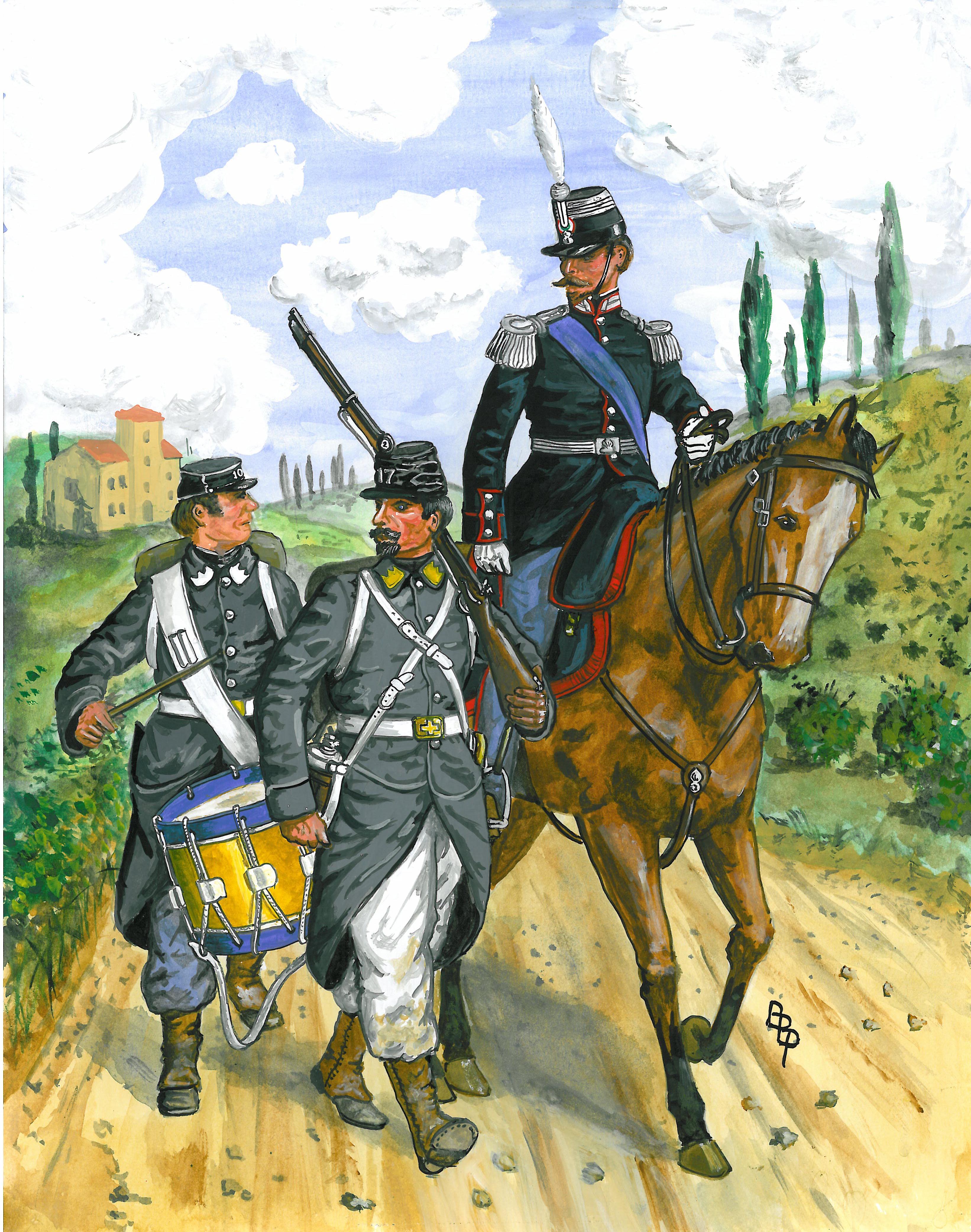SARDINIA
INFANTRY IN 1859
The Kingdom of Italy came into being in March of 1861 following the end of the Second War of Italian Independence. The war, which began as the Franco-Austrian War started in 1859 and following the defeat of the Austrians at Solferino on 24th June 1859, much of northern Italy came under the control of the Kingdom of Sardinia (Piedmont). Despite a secret treaty between Napoleon III and Austria that left principalities of Tuscany, Modena and Parma under Hapsburg control, Sardinian troops occupied them leaving the Austrians powerless to do anything about it. Over the next two years, Sardinia with the help of Garibaldi and his volunteers, overcame resistance from the Papal States and Naples to unite most of the Italian peninsula and proclaim it a Kingdom under Victor Emmanuel II. Only Venice and the City of Rome remained. The first was gained during the Austro-Prussian War of 1866 (despite the Italian defeat at Custozza) and the latter in 1870, while France was engaged in the War with Prussia.
It is not surprising that the Italian Army was modeled on that of Sardinia and formed into regionally titled brigades of 2 infantry regiments each. The Uniforms also closely followed the Sardinian design.
Our illustration shows three infantry regiments that took part in the Battle of Solferino in 1859. The mounted officer is from the 1st Regiment of Grenadiers, (later the Grenadiers of Sardinia) and he is wearing full dress uniform. His light blue sash, the colour of the arms of Savoy, has remained the distinction of Italian army officers to this day. The drummer is from the 10th Regiment in the Regina Brigade. He wears his undress cap (berretta) with the regimental number on the front. His greatcoat has white tabs on the collar, the brigade colour. He wears mid-blue full dress trousers. The drum’s hoops are light blue, like the officer’s sash. The infantryman is dressed the same way as most Piedmontese troops would have been at Solferino. He is from the 17th Regiment (Acqui Brigade) whose yellow facings are shown on the collar of his greatcoat. His white cotton trousers were tucked into brown gaiters and his leather equipment was also white while his shako was in a black painted canvas cover with the number in white on the front. Some regiments had received black leather equipment which was ordered to be worn some months before. Neither the drummer nor the infantryman was ever issued with a tunic.
With minor modifications, this is the uniform that was worn by the Italian line Infantry until 1871.





